talkingfashion » 1990s
-
Picturesque Pearls: A Style Guide
Picturesque Pearls: A Style Guide
By Paige McKirahan
With wedding season well on its way, we wanted to take a look at one of our favorite elegant motifs in accessories for these upcoming warm weather months. Since pearls first made their way into the realm of jewelry, they have been the true symbol of class and superiority; seeing has how the pearl is the world's oldest gemstone with traces back to 420 BC, this elitist undertone has deep historical roots. In the Byzantine empire, for example, it was dictated that only the emperor was permitted to wear pearls with other societies having similar laws. Until the 20th century, pearls were considered to be one of the most valuable gems on the market all over the globe; prior to this time, all pearls were naturally found in wild mollusks, making them more rare and coveted than ever.

Oldest pearl necklace in existence on display at the Louvre (source)
In ancient Greek culture and at the height of the Roman Empire, pearls were worn on gowns, necklaces, and were even used to decorate furniture in wealthy households. It was even said that Cleopatra preferred pearl jewelry above all others, and she went as far as dissolving one of her most priceless pairs of pearl earrings in a glass of wine before drinking it! This ancient popularity led to pearls being extremely favorable with the monarchy; pearls of all shape and color varieties were widely sought after, and many were coming directly from the Persian Gulf. The 16th century in England was even referred to as the Pearl Age, perfectly reflecting the gemstone's prestige at the time.

Cleopatra Dissolving the Pearl in Wine, Andrea Casali (source)
In the Victorian Age, seed pearls became more favorable than any of their counterparts on account of the fact that their small size made them perfect for jewelry and other accessories. They are typically no larger than 2mm in diameter, and they were widely associated with pure ideals. Royal love of pearls continued for generations, with Queen Victoria having an affinity for all things pearl. Prince Albert gifted her a pair of drop-style pearl earrings in 1847, and these are now owned and proudly worn by the reigning monarch, Elizabeth II.
It wasn't until the late 1800s that pearls became a widely accessible material; in 1893, Kokicho Mikimoto discovered how to create cultured pearls, prompting the creation of over 350 pearl farms across Japan by 1935. This caused a widespread pearl mania that perfectly complemented contemporary culture all throughout the 1900s. From Coco Chanel's iconic 1936 portrait to Audrey Hepburn's emblematic look in Breakfast at Tiffany's, pearls became a true symbol of luxury. This sophisticated aesthetic shifted with Alber Elbaz at the helm of Lanvin, where he reimagined the gemstones as a "cool girl" motif rather than something you would find in your grandmother's jewelry box. He truly spun their reputation into something journalists felt were "not like your mother's pearls", and the gemstone has been present in haute couture ever since.


Coco Chanel and Audrey Hepburn in pearls (source)
Now that we know the history behind the eponymous stone, its time to evaluate the types of pearls. They can now be produced in a variety of different ways, with each having its own special set of characteristics! Whether they are natural or cultured, they are formed when a mollusk produces layers of nacre around molecules inside of the shell. The quality of the nacre is what controls the level of the pearls shine, which can cause it to decrease or increase in value. High-quality pearls should be smooth and blemish free, with shapes ranging from round to misshapen. Misshapen pearls are considered to be baroque, after the art movement. Lastly, a pearl set in necklaces can be uniform with all pearls at the same size, or graduated, meaning they change uniformly from the end to the center. With this education in mind, let's take a look at the specific types of pearls on the market!
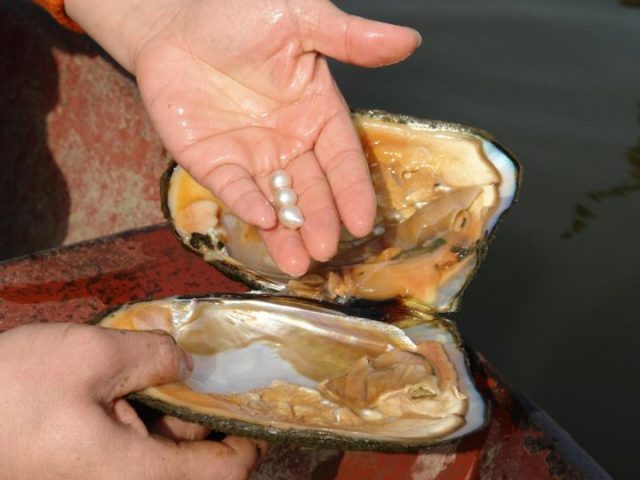
(source)
Natural Pearls
Natural pearls are the rarest type, with many historically being found in the Persian Gulf. Though many have already been harvested, you may be able to purchase these small gemstones, but they will cost you a pretty penny!
Cultured Pearls
Cultured pearls are grown in farms, with the mollusks containing them being raised until they reach the point of being able to accept the mother-of-pearl bead nucleus. The pearl technician then implants the bead and returns the mollusk to water to form the gem. Not all cultured pearls are of high quality, and it can take tens of thousands of pearls to compile a group similar enough to use in jewelry.
Saltwater Pearls
Many countries grow cultured pearls in their saltwater seas. Japan and China produce cultured pearls that can range from 2 mm to 10mm in size, and are usually white in color. Australia, Indonesia, and the Philippines produce the largest of all cultured pearls. They are considered the "South Sea pearl" and can get up to 20 mm with colors ranging from white to cream to gold. There are also saltwater pearls grown in the islands of French Polynesia, with their sizes ranging from 8mm to 16mm. They can be naturally black, but they typically can be gray, blue, green, or purple.
Freshwater Pearls
Freshwater pearls mostly hail from China and are grown in lakes, rivers, and ponds all over the continent. Many are white and similar in size to Akoya pearls in size and shape, and usually, have a thicker nacre on account of them not having a bead nucleus.
Imitation Pearls
Imitation pearls usually have a high luster and are coated glass beads. You can tell these apart from cultured or natural pearls, but it may prove to be difficult based upon how the pearls were treated. For tips on how to analyze your pearls, click here!
We hope that this gave you a better insight into all things pearls! We now have a little bit of pearl mania and if you do too, be sure to check out our selection of pearl accessories!
Sources:
Luna, B. (2015, August 10). The History Of Pearl Jewelry. Retrieved from https://www.ritani.com/blog/gemstone-jewels/the-history-of-pearl-jewelry/Perron, C. (2017, December 08). The History and Symbolism of Pearl Jewelry. Retrieved from https://www.brilliantearth.com/news/the-history-and-symbolism-of-pearl-jewelry/N/A. (2018, June 08). The Evolution of Pearl Jewelry in Fashion. Retrieved from https://www.crfashionbook.com/fashion/a21098608/pearl-jewelry-fashion-history/ -
The Marvellous Life of Marc Jacobs
The Marvellous Life of Marc Jacobs
By Paige McKirahan
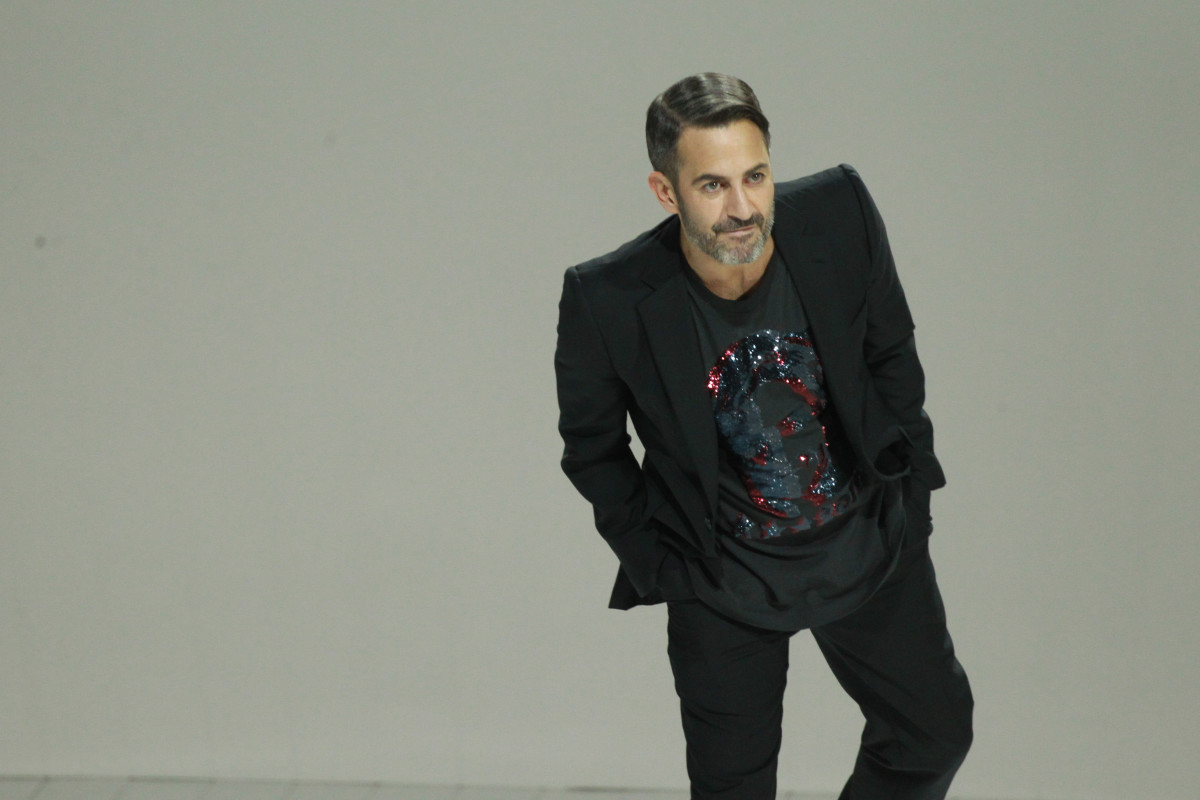
(source)
As we look to all of the fashionable spring birthdays coming up this season, we would be remiss to not celebrate the life of one of the fashions "boy wonders"; Marc Jacobs, born on April 6th, 1963, is an American fashion designer that took the industry by storm when he launched his namesake label in 1993. Prior to the launch of this emblematic brand, though, he was a fashion prodigy that did nothing less than stun his seasoned counterparts. Born in New York, Jacobs was raised with two siblings until the death of his father at the age of 7. His father's passing turned his world upside down and he eventually moved in with his grandmother on the Upper West Side in the wake of his mother's tumultuous new love life; it was here where he learned how to knit and his interest in fashion was encouraged to grow.
At the tender age of 15, Jacobs began attending the High School of Art and Design and working at the sophisticated boutique Charivari. Here, he met the fashion designer Perry Ellis; Ellis became his mentor and facilitated the beginning of Jacob's fashion career. Following his graduation at the School of Art and Design, he enrolled in the prestigious Parsons School of Design as a standout student. He received the both Perry Ellis Gold Thimble Award and Design Student of the Year at graduation in 1984, and this success led him to design his first collection for Sketchbook for Reuben Thomas at just 21.

Jacobs on the runway for Sketchbook (source)
At that time, he was also collaborating with executive Robert Duffy to create Jacobs Duffy Designs Inc.; this gave him enough financial backing to begin his own label, which earned him accolades as the youngest designer to win the Council of Fashion Designers of America Perry Ellis Award for New Fashion Talent (1987). In the following year, he was named the vice president of women's design at Perry Ellis, where his emblematic grunge collection started the edgy movement that essentially took over the '90s. This grunge collection prefaced Perry Ellis's manufacturing shutdown in 1993, leading Jacob's to relaunch his signature brand, Marc Jacobs International Company L.P. After seeing immediate success, he began opening boutiques in 1997 and became the creative director for Louis Vuitton in exchange for financial security surrounding his fashion house.
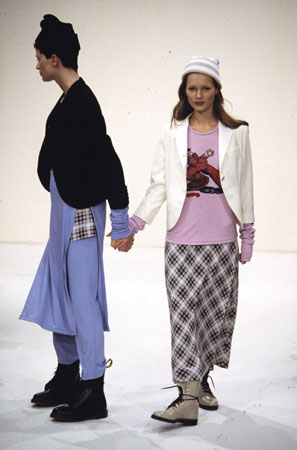
Marc Jacobs for Perry Ellis (source)
Despite the fact that Jacobs found great professional success with LV, his personal life slowly began to falter. He was at the helm of his addiction when the queens of fashion, Anna Wintour and Naomi Campbell, convinced Jacobs to seek help with the aid of other close friends in 1999. After finally getting clean, Jacobs returned to the industry stronger than ever when he launched Louis Vuitton's first ever ready-to-wear line. He continued building his company into an industry giant, expanding his products into menswear, womenswear, children wear, accessories, fragrances, and beauty. At the turn of the century, Jacobs was one of the biggest names in fashion; in 2002, he was named Menswear Designer of the Year, and Accessories Designer of the Year in 1998/99, 2003 and 2005.
As the 2000s have continued, Jacobs has never failed to turn heads. Despite the fact that he stepped down from LV in 2013 and the closing of Marc by Marc Jacobs in 2015, he still remains at the helm of high fashion. His luxury label lives on, and so does his legacy!
Sources:
Nolen, J. L. (2018, July 06). Marc Jacobs. Retrieved from https://www.britannica.com/biography/Marc-Jacobs
Marc Jacobs. (2017, September 07). Retrieved from https://www.biography.com/people/marc-jacobs-594096
-
Designer Spotlight: Christian Dior
Designer Spotlight: Christian Dior
By Paige McKirahan
As a household name in both the fashion world and among creatives alike, Christian Dior was the obvious choice for our designer spotlight this week. This French couturier was born on the coast of Normandy in 1905 as one of five children born to a wealthy fertilizer manufacturer. He moved to Paris at the age of 5 and used his artistic inclinations to sell his sketches on the streets for small change. Though his parents hoped that he would become a renowned diplomat, he was adamant about pursuing his art, prompting his father purchased a small art gallery for him to take over after he completed school. The gallery held a variety of artistic works by artists like Pablo Picasso and tiny but mighty gallery saw small success. Despite this, Christian was forced to close its doors in the wake of the Great Depression in 1929, the deaths of his mother and brother, and the demise of his father’s business.

Christian Dior Art Gallery (source)
Following this event, Christian began working with fashion designer Robert Piguet and did so for around 10 years until he was chosen for military service in 1940. He served for two years and then went to work with couturier Lucien LeLong who dressed the wives of Nazi officers and French collaborators in order to preserve the industry’s economic and artistic prosperity. During this time, Christian was the primary designer at LeLong’s fashion house and worked alongside Pierre Balmain which, as you may have guessed, is the founder of the Balmain fashion house created in 1946.
After working with and under some of the industry’s most prevalent names, Christian decided he was going to found his own fashion house; in December 1946, he founded the house of Dior in Paris and was backed by Marcel Boussac, a cotton-fabric Magnate. Many say that the house was not truly open until 1947, which is when Christian debuted his first collection.

New Look design from first Dior Collection (source)
This first collection, containing 90 different looks, was considered the pinnacle of the “New Look” as defined by US Harper's Bazaar magazine editor Carmel Snow. His designs were not aligned with the wartime fabric restrictions and featured calf length, full skirts, cinched waists, and fuller busts. The look garnered some criticism on account of its overall opulence, but it was this lavishness that allowed Paris to re-establish itself as a head player in the fashion world.
His was an immediate success and was overwhelmed with orders from world-famous icons like Rita Hayworth and Margot Fonteyn. The British Royal family even invited Christian to have a private showing of his collection despite the fact that King George V barred young princesses Elizabeth and Margaret from wearing his controversial New Look pieces. After he became an established name in the industry, he established his ready-to-wear house on New York’ 5th Avenue in 1948 as the first of its kind. His debut perfume line launched in 1948 as well with Miss Dior being his first fragrance, which was named after his sister.
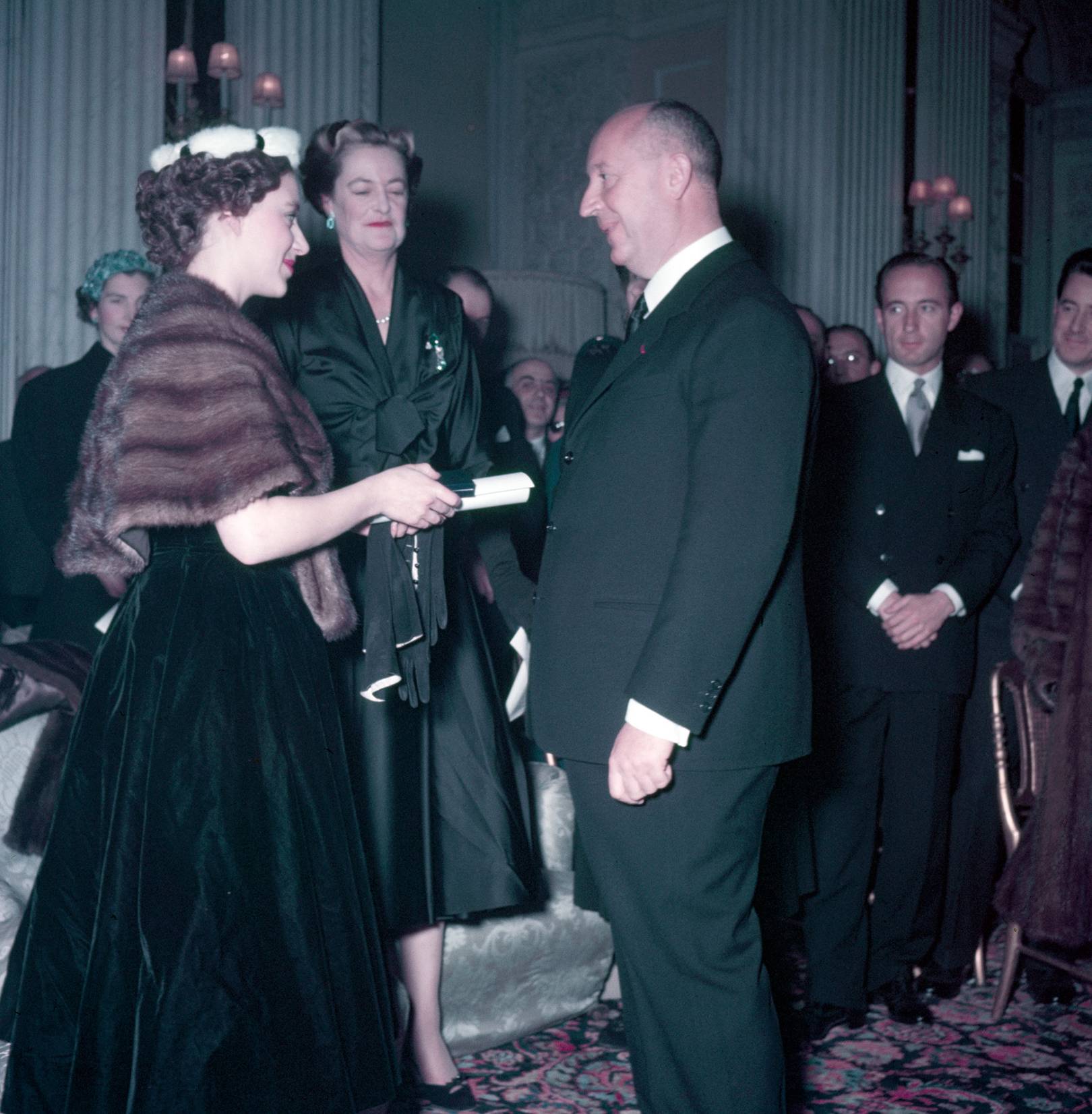
Christian meeting Princess Margaret (source)
Not to be outdone by any of his counterparts, Dior was the first haute couture brand to license the production of its designs beginning in 1949. Christian realized that his New Look pieces worked hand in hand with one another and he along with his business partner Jacques Rouet saw the importance in licensing his name to an array of luxury accessories including furs, hats, stockings, and ties. This decision was met with great criticism as it was said to “cheapened the haute couture industry”. Regardless, his massive success with the endeavor inspired nearly all other couturiers to follow the same model.
In 1955, Dior hired 19-year-old Yves Saint Laurent as his design assistant and almost immediately knew that Laurent would be the one to succeed him at Dior. He told Laurent’s mother this at the age of 52 and she was quite confused about the remark until he suffered from a fatal heart attack in October of 1957 shortly after his meeting with her. His funeral saw over 2,000 attendees that included his staff and multitude of famous clients with the Duchess of Windsor at their head.
In the wake of Christian's death, Rouet appointed 21-year-old Laurent as the house’s artistic director in an effort to counteract the disarray caused by the event. He held the position until he was drafted and was succeed by Marc Bohan who defined a new era and silhouette for Dior that is known as the Slim Look. This modernized, sleek version of Christian’s iconic look proved to be a hit in the industry and he was an artistic director until 1989. Gianfranco Ferre followed him and then was replaced by John Galliano in 1997 as he was said to have a creative talent that aligned perfectly with Christian’s. Ferre and Galliano transformed the designs and Dior’s ready-to-wear lines shot up in popularity. Galliano’s name was plastered on headlines everywhere when fashion and philanthropic icon Princess Diana wore his first couture dress for the brand.

St. Laurent design for Dior, 1955 (source)
Galliano also was a pioneer in using branded logo motifs and he used that design to create his now iconic saddlebags that were in the hands of every it girl of the era. His brilliant work dazzles but also brought controversy, and he was eventually removed from his position after making anti-Semitic statements on film after a wild night out. Raf Simons then was appointed to the role of artistic director and was a great success from 2012 to 2016. After his departure, the decision surrounding who would succeed him was difficult but game-changing; Maria Grazia Chiuri, the former Valentino co-creative director, took over operations at Dior as the first female to hold the position. Her unapologetic approach empowers women and ensures the brands' success for years to come! We may not have any Dior in store, but we do have a great Saint Laurent piece sure to sate your designer appetite!
Sources:
Bannerman, S. L. (2018, July 19). The History of the House of Dior. Retrieved from https://theculturetrip.com/europe/france/articles/the-history-of-the-house-of-dior/
Sowray, B. (2017, August 23). Christian Dior. Retrieved from https://www.vogue.co.uk/article/christian-dior
-
Fashion Flashback: The Hot History of Hats
Fashion Flashback: The Hot History of Hats
By Paige McKirahan
To continue on with our historical evaluation behind some of the most iconic accessories of all time, it would only be appropriate to reflect on how hats came to be in celebration of Hat Day! Whether they be worn for fashion, protection, ceremonies, rituals, or utilitarian purposes, these head coverings have been a staple in the industry for thousands of years. Of course, this long history starts in ancient Egypt; one of the first images depicting a hat can be found in Thebes tomb and this illustration shows a man wearing a conical straw hat. They also first appeared in an early illustration of Pileus which depicted him wearing a simple small cap.

Ancient Egyptian Headwear (source)
In this time and throughout history, one of the most popular materials for hats is felt. The ancient Egyptians and Native Americans first discovered this material when they discovered that camel hair, when compacted into the floors of their sandals, contributes to the creation of this material. St. Clement, the patron saint of felt hat makers, was said to encounter the material in a similar fashion after filling his shoes with flax fibers.
In these ancient times, hats were generally worn either to signify high status or for protection from the elements. In Ancient Rome and Greece, Phrygian caps also referred to as Liberty caps, were used as symbols of freedom for exonerated slaves. The first brimmed caps were found in Ancient Greece and were worn by those seeking to protect themselves from the sun, typically those working in fields or in construction.
As headwear began to evolve, gendered styles came into play during the Middle Ages; women were wearing a variety of new head covering designs ranging from veils to wimples. Later in those years, women’s hats transformed into elaborate displays of wealth that sometimes featured two horn-like decorations or conical shapes.

Middle Ages Hat Styles (source)
The 18th century birthed newer designs created by milliners; the term was created to describe products made in Milan and other Northern Italian regions that were made with high-quality materials. One of the most popular hats of this time was the Shepherdess hat, which featured a large, sun-blocking brim. Bonnets were as popular women’s in fashion as top hats were for men, and both were made from silk at the time. Silk top hats were so popular and awe-inspiring that a man wearing once caused such a stir in the streets he earned himself a 500 dollar fine from inciting panic!
In the following century, hat’s widespread popularity began to rise and was considered to be very fashionable as more designs become available. Women’s hats started growing in size and opulence with many including feather details, circular constructions, and varying brim styles. Brim sizes saw a decrease with the introduction of the parasol umbrella, and then grew again as the 20th century grew closer. Hats also began adapting to popular hairstyles, accommodating new cuts and fashions as to not disturb one's overall look. The first Kentucky Derby occurred in this century and established itself as the largest hat fashion event in America (and it still is to this day!).
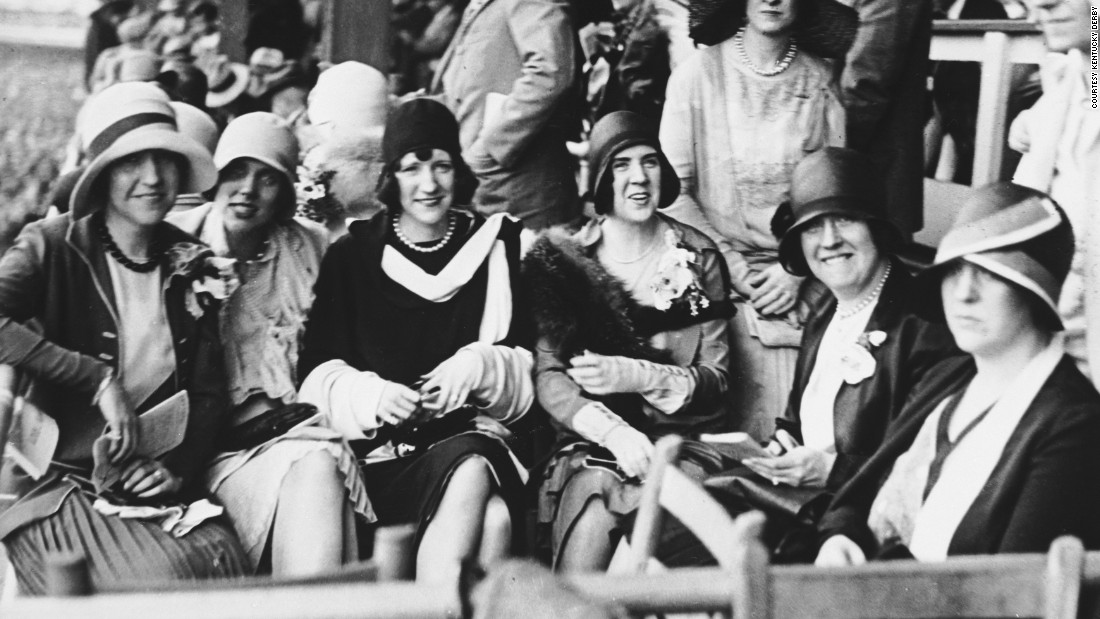
The 20th century saw hats in a new light entirely. Wars, constant rationing, and accompanying social and cultural changes had a huge impact on all aspects of fashion, including headwear. The cloche hat peaked in popularity, and round hats with decorative flowers were another favorite of fashion lovers everywhere. Towards the middle of the century, fashion icons like Jackie Kennedy popularized the pillbox hat, which was followed by the fedora for both genders. Berets, top hats, sombreros, western hats, and ball caps all fluctuated in popularity during this time, and some of these styles are still very well received by the public.
Today, hats are still a hugely popular accessory and have been made staples in many sporting, cultural, and social events. They aren’t typically worn for ornamental purposes with as much gusto as they once were, but sports caps, beanies, and sun hats are beloved accessories for casual wear in modern times. To get a piece of fashion history to have as your own, check our collection of hats
Happy Hat Day TalkingFashion Peeps!
Sources:
A Brief History of Hats. (2011). Retrieved from http://hatbox.com/hat-history.cfmHistory and Origin of Hats. (n.d.). Retrieved from http://www.historyofhats.net/hat-history/who-invented-hats/ -
Fashion & Style Photography Spotlight: Richard Avedon
Fashion & Style Photography Spotlight: Richard Avedon
By Paige McKirahan
To get off ground the launch of our new photography-focused column, we have elected to spotlight Richard Avedon to kick off the new year! As an American fashion and portrait photographer who was best known for flawlessly capturing his subject’s personalities, he shot over 148 Vogue covers throughout his prestigious career. With humble beginnings as a photographer for the Marines during World War II, he then moved on to become a quintessential photographer at Harper’s Bazaar, Vogue, and The New Yorker. Born in 1923, this New York City native’s meticulous eye for detail and great ability to convey emotions through photography landed him the position as one of legendary fashion editor Diana Vreeland’s staff photographers. Her wild visions and eccentric fashion stories were given a new life under Avedon, and his position in the fashion world was secured with her approval. Though most of his work was created before the our current century, his piece's iconic compositions and notable subjects have allowed them to survive the tests of time. Wondering where you have seen his work? He produced a Calvin Klein campaign with 15-year-old Brooke Shields, Revlon’s ‘The Most Unforgettable Women’ campaign, and an advertisement series for Gianni Versace beginning with the spring/summer campaign 1980.
Sources:
Hardy, U. (2016, April 04). 10 Iconic Fashion Photographers. Retrieved from https://theculturetrip.com/north-america/usa/articles/10-iconic-fashion-photographers/



